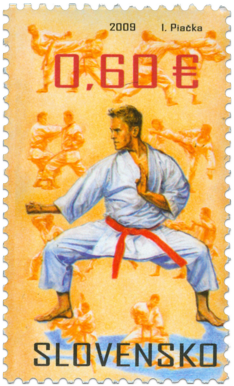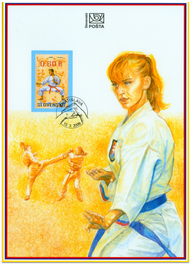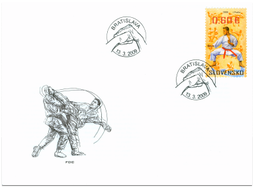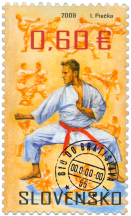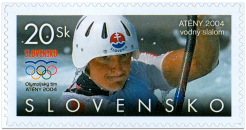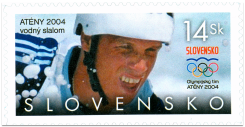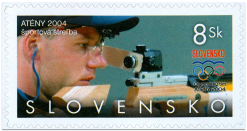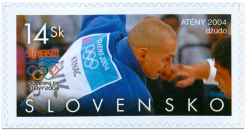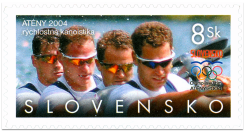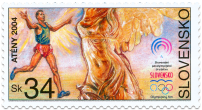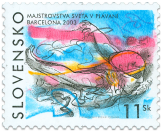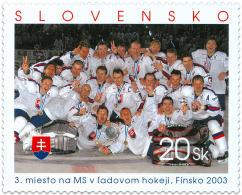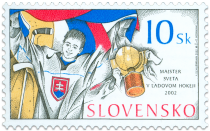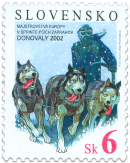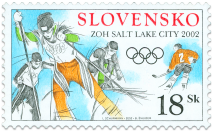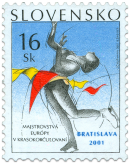451 Date of issue
13.03.2009 Face value
0.60 € Sell price
0.60 €
Martial art represents an extensive system of techniques which determine its character - depending on style, school, tradition, and other specific elements. Judo, iaido, kendo, aikido and other martial arts today comprise at least two different forms. This also applies to karate, which is the graphic motif for the stamp as well as the entire Martial Arts issue. Contemporary karate, mostly a sport today, developed from the traditional Okinawean tode. We ought to bear in mind however that this traditional way of fighting also has its historical predecessors: the Greek “pancration”, the Indian “vajramushti”, and the Chinese “chuan fa” all have something in common with the Okinawian tode. Historical and political circumstances, the occupation of the Rjukju islands in 1609, and the subsequent ban on bearing/owning weapons in 1629 led to the uniting of chuan fa and tode into a single fighting system called “te” – i.e. hands. “Te” was trained in absolute secrecy at that time and its sole purpose was to kill an opponent with a single blow. Three hundred years later, when Okinawa became a prefecture of Japan and karate became accessible to the public - the sports form of karate developed. The merger of the three cultural elements of the Chinese kara, and the Okinawean and Japanese jitsu - formed karate-jitsu, meaning the art of the Chinese hand. The apprentices of the Okinawean masters Azato and Higaonni later opened their own schools. G. Funakoshi developed the Shotokan style. Mabuni changed the Shito-style and Ghogjun Hijagi named his karate-jitsu Godju. The founder of modern karate, Gichin Funakoshi (1867-1955), changed the Chinese sign kara (meaning China) to another Chinese kara-sign (with the same pronunciation), but this time with the meaning “empty”, suggesting the Zen-meaning “become empty”, i.e. being in the condition of highest readiness, with the will free of selfishness and decadence in our striving for an appropriate reaction to everything we may encounter in life. In 1934 G. Funakoshi officially changed the name karate into karate-do, adding the dimension of systemic techniques and mental attitudes leading to man’s improvement and quality enhancement on his path to all-round development. By adding the word “do” and the formation of karate-do, this martial art became closer to budo-arts such as “kendo” – the way of the sword, “kjudo” – the way of the bow, and “judo” – the fine-way. “Do” means ‘the way’ – i.e. the way of life we all should lead to become aware of our inner-most essence, i.e. karate-do. This means that also other budo-arts are principally ways of becoming a true human being. Vieroslav Ondrejička
Show lessSimilar products
340 Date of issue
05.11.2004
341 Date of issue
05.11.2004
339 Date of issue
05.11.2004
338 Date of issue
05.11.2004
343 Date of issue
05.11.2004
328 Date of issue
31.05.2004
303 Date of issue
03.07.2003
297 Date of issue
30.05.2003
272 Date of issue
04.07.2002
257 Date of issue
08.02.2002
256 Date of issue
25.01.2002
227 Date of issue
16.01.2001
© 2024 POFIS - Postal philatelic service. All rights reserved

